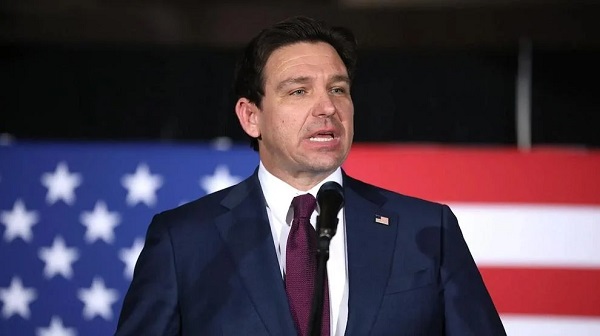Opinion
Exciting that Red Deer may take the lead in Solar Power discussions on March 6 2017
I am excited to hear that the city of Red Deer is considering a plan to retrofit homes to solar energy. To fully outfit a home with solar energy would cost 25,000 dollars and at 3% interest it would cost $242 per month for 10 years. The city would consider loaning the money, putting a lien on your home, and collect it back through property taxes, for example. The debt stays with the home. Your electric bills go down, your property value goes up.
The city puts in utilities sidewalks etc. that we all pay for through our property taxes. New builds would be less expensive and would be easier and the city should consider the option at all times.
Another benefit to the city as a whole would be eco-friendly, would create jobs and could take advantage of economy of scale. Taking the lead in this could push other levels of governments to participate. I am glad to see the city addressing this issue on March 6 2017. I would suggest everyone offer communication to our city. You could e-mail legislative [email protected]
Past blogs are included;
May I ask a stupid question or 2 or 3 or 11?
I hear a lot about solar panels, solar power, solar heating, and passive solar heating.
Solar panels produce electricity and could charge batteries for later use or to keep batteries charged. Electric cars and busses run on batteries that get recharged, after use, when they are plugged in. Why do we not see solar panels on electric cars and busses? You plug them in power supplies that are often times coal generated to charge up your batteries. Would the solar panels on the cars and busses lessen the time and power requirements? A bus can be 40 feet long and over 8 feet wide, offering a large roof area for solar panels.
We talk about solar panels being less efficient in the cold, under snow and ice. Why not incorporate solar heating panels to keep your solar panels warm, and ice and snow free?
Could we put a magnifying glass or lens in front of a solar panel to increase light intensity?
What about a mirror behind the solar panel?
How about a parabolic mirror?
What is that, you ask?
A parabolic mirror is a curved mirror, like a satellite dish.
According to Wikipedia;
“The parabolic reflector functions due to the geometric properties of the paraboloidal shape: any incoming ray that is parallel to the axis of the dish will be reflected to a central point, or “focus”. Because many types of energy can be reflected in this way, parabolic reflectors can be used to collect and concentrate energy entering the reflector at a particular angle.”
We have all seen satellite dishes being used for tv signals focused on receiver so why not use a polished reflective satellite dish to focus sunlight on a solar receiver, possibly a solar panel or a solar sphere? Like the TV dishes they started huge and got smaller and more efficient.
Could we not place a magnifying lens in front, and also incorporate passive solar heating for year round use? Could we not use a portion of the power created to ensure optimal aiming?
Solar panels are getting more powerful, more efficient and less expensive. Instead of spending billions on big projects could we not focus on smaller ones?
These may be stupid questions, but I just had to ask.
Is it time to have or implement a National Electrical Strategy?
I live in Red Deer, a small city in Central Alberta. My electrical bill last month was $95.
The average household, according to Google, in Canada uses 972 KWHs monthly, but I used 848 KWHs last month, so if I had been an average user then my bill would have been $109.
My electrical bill shows that my electrical use cost only $32.40 while administration cost $6.99, distribution cost $25.90 transmission fees cost $23.86, include access fees, rate riders and balancing pool allocations and GST and my bill came to $95.
Talk of carbon taxes, green energy would increase my energy costs. Fine, increasing my energy costs by 10% would mean an increase of only $3.24 because all the other charges should not go up. Changing fuel or supply should not affect administrators, power lines, poles or switches.
I started requesting electric bills from homes in other parts of Alberta and the costs varied from 3.75/ kwh to 5.99/kwh and the other costs varied in name and amount for varying total costs per kwh from 11.7 to 15.75/kwh. So at 848 kwh my bill would go from $95 up to $133.56 depending on location.
Alberta is deregulated and you have options of providers. Floating and fixed rates, but the other fees are always added.
A home in Vancouver showed an average 11.37/kwh so my bill would be $96.50, very similar to my Alberta bill. Vancouver is vastly different and denser market. Vancouver has 5,249 people per km. or 2100 homes per square km.
Alberta has a population of 4,252,879 people in 640,081.87 sq. kms. For a density of 6.7 people per square km. or 2.7 homes per square km. So you would think that the costs would be astronomically higher to compensate for the vast distances, and the increased wiring, poles, and installation of such, but apparently not.
So I thought about Ontario. Population of 13,982.984 in 908,607 square kms of land. 15.4 people or 6.2 homes per square kms. More than twice the density of Alberta. The transmission and distribution costs should be equal to or less than sparsely populated Alberta. I started requesting power bills from home owners in Ontario, especially in rural Ontario.
The first bill came from Winchester, 40 kms. from Ottawa. It showed a monthly usage of 661.24 KWHs. Energy costs varied from 8.7/kwh of low peak to 18/kwh during high peak for energy cost of $79.06. Add in delivery charge of $65.41, regulatory fees and HST and the bill comes to $164.96. Or 25/kwh. My current bill would now be $211.55 if I lived in Winchester.
The second bill came from a family outside Chesterville. It showed higher usage, perhaps because of location, age of appliances or lifestyle. Energy use of 1281 KWHs for a bill of $278.93 or 22/kwh. My bill would then be $184.65 if I lived outside Chesterville.
Albertans get their power from natural gas (44%), coal (39%) and even hydro (6%) while Ontario get their power from Nuclear, (66%) and Hydro (22%) But in Alberta, we are expecting increases in our power bills due to carbon taxes, green initiatives and the new power lines being built to the southern border. Paid for by current users to provide power south of the border. Ontario has some similar changes and challenges ahead to incur expectations of increased costs. Is this proper?
Alberta is only 70% the size of Ontario, our population is only 30% of Ontario, yet Alberta power bills are substantially lower. Capitalists will tell you that larger markets like Ontario, means lower costs, as one would also expect with increased density as in this case, Ontario.
Alberta deregulated the electrical sector increasing competition. Would that help or exasperate the problem in Ontario? Should the vast majority of urban homes subsidize the rural users? Should a standard rate be applied to all in Ontario?
To recap with averages of 972 KWHs per home per month it would cost $110.61 in Vancouver B.C., $108.90 in Red Deer Ab., $242.48 in Winchester Ont. And $211.65 in Chesterville Ont. Definitely not a level playing field, is it?
Is it time for the Federal Government to create a National Electrical Strategy? We could at least study on it.
What do you think?
International
FBI didn’t think it had cause to raid Trump but DOJ did it anyway

Newly released internal FBI records show that agents themselves doubted they had enough evidence to justify the August 2022 raid on President Trump’s Mar-a-Lago home, but were pushed forward anyway by senior officials inside the Biden Justice Department — a decision that Republican lawmakers now say confirms a grave abuse of federal power.
The documents, made public Tuesday by Senate Judiciary Committee Chairman Chuck Grassley, reveal weeks of internal frustration inside the FBI as agents struggled to establish probable cause that classified material remained at Trump’s Palm Beach estate. In one July 13, 2022 email from the FBI’s Washington Field Office, an official complained that investigators had spent six “counterproductive” weeks chasing a warrant without uncovering any new evidence. “We haven’t generated any new facts, but keep being given draft after draft after draft,” the official wrote, questioning how long the effort could continue without a witness or fresh intelligence to justify a search. Despite those concerns, the DOJ pressed ahead.
Grassley called the disclosures “shocking,” writing on X that the records show the “FBI DID NOT BELIEVE IT HAD PROBABLE CAUSE to raid Pres Trump’s Mar-a-Lago home but Biden DOJ pushed for it anyway.” The Iowa Republican said the emails and memoranda point to a “miscarriage of justice” driven from the top down, not a careful law-enforcement decision grounded in evidence. According to the records, witness interviews conducted after Trump returned classified documents on June 3, 2022 failed to produce proof that sensitive materials were still being concealed at the resort.
Emails exchanged in the week leading up to the Aug. 8 raid show FBI officials actively searching for what they described as a “second path” to obtain a warrant, while also warning about how the operation would look if carried out against a former president. Washington Field Office counterintelligence chief Tony Riedlinger and then-assistant director Steven D’Antuono were included on the discussions, which stressed the need for a “professional, low key” approach and cooperation from Trump attorney Evan Corcoran — a plan that agents cautioned “may not go well at DOJ.” Internal correspondence shows that senior Justice Department officials were unmoved by those concerns. One DOJ official later told colleagues he “frankly [didn’t] give a damn about the optics.”
The records also indicate the DOJ had been preparing for a raid far earlier than previously acknowledged. Emails from early June 2022 show prosecutors wanted a search warrant ready within days of a meeting with Corcoran, anticipating noncompliance and refusing to grant extensions for document production. By July, the scope of the proposed search had expanded dramatically, covering Trump’s office, storage rooms, owner’s quarters, and any other spaces that might have held government records — with only guest rooms explicitly excluded.
When the warrant was finally executed, it bore little resemblance to the restrained operation agents had discussed internally. Trump was not in Florida at the time, having traveled to his Bedminster golf club in New Jersey, leaving behind only a small staff. Dozens of FBI agents arrived with lights and sirens, searched multiple areas of the property, entered Melania Trump’s bedroom, and cracked open a safe in Trump’s office. Agents remained on site for most of the day. Trump condemned the action on Truth Social, calling it unprecedented and unnecessary after months of cooperation. “Nothing like this has ever happened to a President of the United States before,” he wrote.
Attorney General Merrick Garland ultimately approved the raid over objections raised within the FBI. The search later became the foundation for special counsel Jack Smith’s indictment of Trump in June 2023 on multiple counts related to classified documents. That case collapsed when U.S. District Judge Aileen Cannon ruled that Smith had been unlawfully appointed without congressional authorization.
In a cover letter accompanying the document release, FBI Assistant Director Marshall Yates said the bureau was turning over the records in the interest of transparency and restoring public trust. For Grassley and other Republicans, the emails instead reinforce what Trump supporters have argued for years — that the Mar-a-Lago raid was not the product of neutral law enforcement, but a politically driven decision imposed by a Justice Department willing to override its own investigators to target a sitting president’s chief political rival.
Indigenous
Residential school burials controversy continues to fuel wave of church arsons, new data suggests

By Edgardo Sepulveda for Inside Policy
Church arsons surged again in 2024 according to new data released by Statistics Canada—continuing a disturbing trend first uncovered by a Macdonald-Laurier Institute investigation published last year.
Scorched Earth: A quantitative analysis of arson at Canadian religious institutions and its threat to reconciliation, which I published last April, warned that the arson wave – almost certainly spurred by ongoing anger over potential unmarked burials of children at residential schools –would not disappear without concerted government policy intervention.
Unfortunately, my prediction is proving accurate.
Newly available custom data from Statistics Canada confirms that arsons in 2024 continued at nearly double the baseline level established from 2011–17.
This persistent elevation is particularly concerning given that arson is a dangerous crime with significant financial costs and, in the case of religious institutions, broader implications for Canadian society and political discourse. Most importantly for those committed to Indigenous reconciliation, the apparent lack of effective policy response risks undermining public support for reconciliation efforts—suggesting these crimes are not being treated with the seriousness they deserve, particularly because many targets are Catholic churches associated with residential school legacies.
Scorched Earth developed specific terms and a conceptual framework to analyze arsons at religious institutions. First, I refer to “potential unmarked burials” rather than other terminology, including “mass graves” – language suggesting verified remains and, potentially, the site of clandestine burials. Neither has been established. No remains have been verified at any of the 21 announced sites. The Tk’emlúps te Secwépemc First Nation revised its own characterization of the Kamloops, BC, announcements in May 2024 to “probable unmarked burial sites,” a significant shift from its initial May 2021 announcement of “remains of 215 children.” This precipitated announcement, together with some of the initial media coverage in Canada and elsewhere, likely contributed to the intensity of the arson response.
Second, the conceptual framework, updated with the latest Statistics Canada data, separates “baseline” from “excess” arson associated with specific shocks, such as the announcements. It shows that arsons at religious institutions have remained elevated since the initial spike in 2021. Based on careful geographic statistical analysis presented in Scorched Earth, I demonstrated that the most likely explanation for elevated arsons was a criminal response prompted by the 17 announcements of potential unmarked burials at former residential schools, beginning in Kamloops, B.C., in May 2021. Four additional announcements occurred in 2024, bringing the total to 21. While data through 2023 showed no detectable increase in arsons related to the Israel-Gaza conflict, analysis of 2024 data suggests this changed: arsons in response to that conflict now constitute a minority of the increase above baseline levels, with the majority remaining those related to announcements of potential unmarked burials.
Investigation and Prosecution Rates Remain Insufficient for Effective Deterrence
Statistics Canada’s newly released custom clearance data for arson at religious institutions provides the first comprehensive official view of law enforcement effectiveness in these cases, superseding the preliminary compilation included in Scorched Earth.
Crimes in Canada are considered “solved” when police identify a suspect with sufficient evidence to support charges. Cases are then classified as “cleared” through two mechanisms: laying charges (“cleared by charge”) or alternative processes such as diversion programs (“cleared otherwise”).
As Figure 2 illustrates, the cleared-by-charge rate for all arson averaged 13.1 per cent over the 2011–24 period. For religious institutions, the yearly average reached 14.4 per cent—marginally higher but still concerning. The clearance rate for religious institutions shows significant year-over-year variability, reflecting the smaller statistical base compared to all arsons. The “cleared otherwise” category adds an average of 4.7 per cent for both arson types.
While these low clearance rates align with those for other property crimes, the continuing elevated arson rate suggests they provide insufficient deterrence for either first-time or serial arsonists. Evidence from Scorched Earth indicates that sustained clearance rates in the mid-30 per cent range—achieved by the National Church Arson Task Force (NCATF) in the United States during the 1990s—effectively reduced church arsons targeting predominantly Black congregations in the American South.
While my statistical analysis indicates that announcements of potential unmarked burials likely motivated many incidents, this remains circumstantial evidence. Direct evidence would require confessions or explicit statements of rationale from arrested arsonists, or credible claims of responsibility from organized groups. Out of the 306 arsons at religious institutions over the 2021-24 period, 53 resulted in charges and 13 were cleared through alternative processes, totaling 64 cleared incidents—an overall clearance rate of 21 per cent.
A clearance rate at this level, while insufficient for effective deterrence, makes it unlikely that most arsons during this period resulted from organized political, ideological, or anti-religious campaigns. A coordinated campaign would likely be visible to investigators even at this clearance level. Since police identify suspects in far more cases than they prosecute, investigators develop a broader perspective on potential culprits than clearance rates alone suggest. Law enforcement officials have not provided any indication of such organized campaigns.
Federal and Provincial Funding Addresses Searches But Ignores Consequences
Neither federal nor provincial governments have introduced policy initiatives addressing elevated arson rates at religious institutions, despite substantial new funding for related matters.
Following the Kamloops announcement, the federal government launched the Residential Schools Missing Children Community Support program, providing $246 million to hundreds of communities, including for research and field investigations. Separately, British Columbia, Alberta, Ontario, and other provinces have committed hundreds of millions in additional dollars, including programs to address mental health effects from the search process and announcements.
This funding inventory highlights a significant policy gap: substantial resources address the cause—announcements of potential unmarked burials—while none target the effect: arsons at religious institutions.
Even viewed narrowly as a crime issue, recent government responses to other property crimes demonstrate available policy tools. When auto theft peaked in 2023, the federal government announced $121 million in federal support, convened a national summit with all levels of government and law enforcement, and released a National Action Plan by May 2024.
Policy Gaps and a Call to Action
The NCATF, created in response to arsons targeting Black churches in the 1990s United States, achieved clearance rates sufficient to reduce incidents. Canada possesses the same policy tools but has not deployed them for residential school-related arsons.
This is not a matter of capacity or institutional precedent. Recent government responses to other serious property crimes, such as auto theft, demonstrate that Canada can mobilize coordinated federal-provincial action when it chooses to. The apparent policy inaction since 2021 for residential school-related arsons must end.
Canada is not powerless to stop the arsonists. The policy recommendations set out in Scorched Earth continue to be valid:
- Create a national or regional integrated police/fire investigations unit focused specifically on arson at religious institutions. This integrated unit would investigate arsons at all religious institutions—Christian, Muslim, Jewish, and others.
- Improve Indigenous police and fire protection services, including to ensure full Indigenous participation in the integrated unit.
- Complete the long-running project of building and maintaining a comprehensive and timely national and on-reserve database of fire statistics.
Law enforcement officials must thoroughly investigate and prosecute the arsonists. The attacks threaten reconciliation and full Indigenous equality—and they must be condemned by all Canadians.
Economist Edgardo Sepulveda has more than 30 years of experience advising clients in more than forty countries. He has written for Jacobin magazine, TVO Today, and the Alberta Federation of Labour, and has been lead author of three peer-reviewed academic articles in the last five years. He received his BA (Hon) from the University of British Columbia and his MA from Queen’s University, both in Economics. He established Sepulveda Consulting Inc. in 2006.
-

 Daily Caller1 day ago
Daily Caller1 day agoChinese Billionaire Tried To Build US-Born Baby Empire As Overseas Elites Turn To American Surrogates
-

 Great Reset2 days ago
Great Reset2 days agoViral TikTok video shows 7-year-old cuddling great-grandfather before he’s euthanized
-

 International2 days ago
International2 days agoAt Least 15 Killed In Shooting Targeting Jewish Community At Australia’s Bondi Beach, Police Say
-

 Alberta1 day ago
Alberta1 day agoSchools should go back to basics to mitigate effects of AI
-

 International1 day ago
International1 day agoTwo states designate Muslim group as terrorist
-

 Digital ID1 day ago
Digital ID1 day agoCanada releases new digital ID app for personal documents despite privacy concerns
-

 Business1 day ago
Business1 day agoMajor tax changes in 2026: Report
-

 Censorship Industrial Complex1 day ago
Censorship Industrial Complex1 day agoDeath by a thousand clicks – government censorship of Canada’s internet







